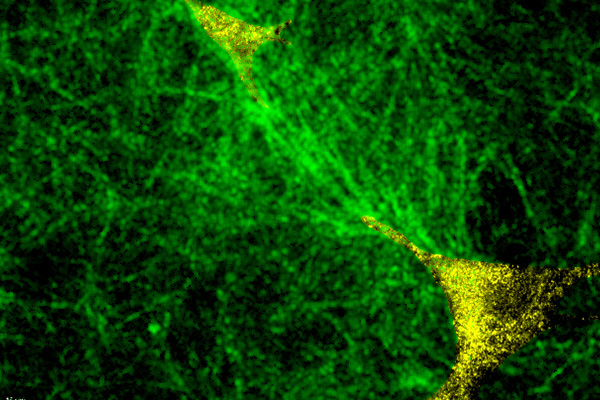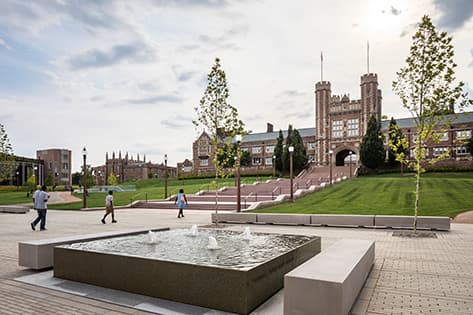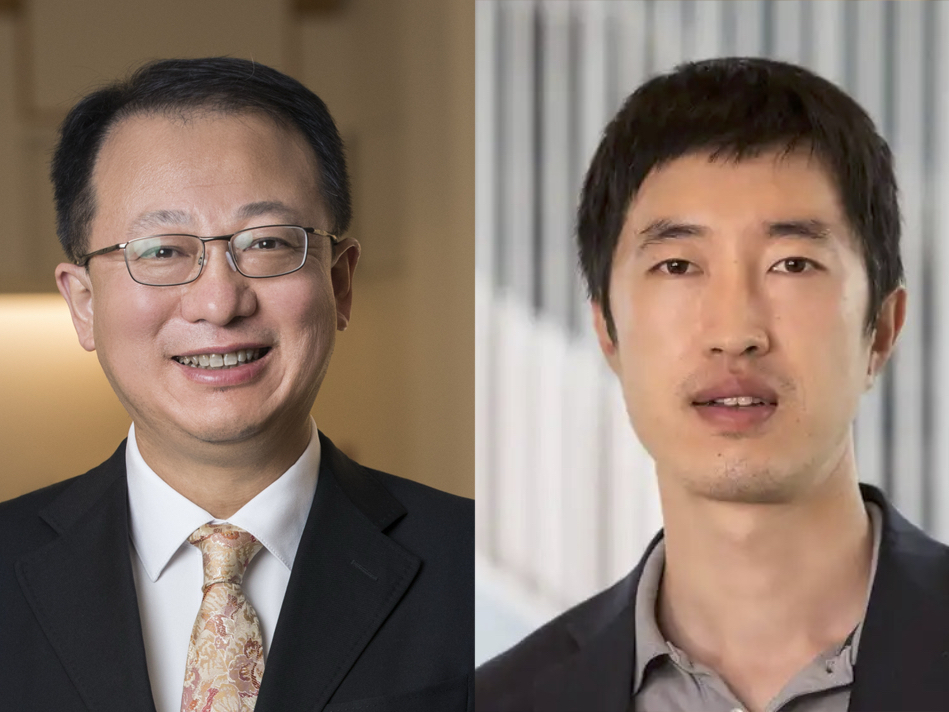Tissue ‘tipping points’: How cells collectively switch from healthy to disease states
Collaborative research from Guy Genin’s lab and Tsinghua University identifies phase transitions in living tissue that could explain why fibrosis suddenly accelerates

Cells convert mechanical forces into signals that influence physiological processes, such as exercise strengthening bones. A research team at Washington University in St. Louis and Tsinghua University in Beijing have discovered that biological tissues can also undergo dramatic phase transitions, or collective shifts where wound healing cells can switch from disordered, healthy states to highly coordinated disease states, like when water suddenly freezes into ice.
This discovery, published Oct. 3, 2025, in Proceedings of the National Academy of Sciences, reveals why fibrotic diseases often progress in switch-like jumps rather than gradually and points to new therapeutic strategies that target the physical properties of tissue rather than just cellular biochemistry. The team used computational modeling to uncover the mechanical “tipping point” that determines whether cells can collectively coordinate to spread a disease called fibrosis, an excessive scarring that underlies failure of nearly any organ, and especially in diseases of the liver, lungs, kidneys and heart.
“What we’ve shown is that this isn’t a gradual process,” explained Guy M. Genin, co-senior author and Harold and Kathleen Faught Professor of Mechanical Engineering in the McKelvey School of Engineering at WashU. “There’s a sharp transition point. When cells are within a critical spacing that depends on the way their matrix deforms, they can ‘talk’ to each other mechanically through the matrix. Above it, they’re effectively isolated, and below it they interact strongly with one another. This on-off switch behavior is what we see in fibrosis progression: periods of stability followed by rapid scarring.”
The fiber network makes all the difference, and so might your diet
Phase transitions are familiar in physics: Water freezes to ice at 0 C, and iron becomes ferromagnetic below 770 C. The new research demonstrates that living tissues show similar behavior. When cells are spaced far apart in a tissue, they act independently, but when cell density crosses a critical threshold – a few hundred micrometers apart – they begin communicating mechanically and acting in concert, dramatically compacting and stiffening the tissue.
The research shows why this phase transition occurs: Fibrous networks like collagen enable long-range mechanical communication in a way that uniform elastic materials cannot.
“If you embedded cells in rubber, they could barely sense their neighbors even if they were close together,” said Xiangjun Peng, first author and a Shuimu Scholar at Tsinghua University. “But collagen fibers can be recruited and aligned by cell forces, creating stiffened ‘tension bands’ that act as mechanical communication highways, transmitting signals over much longer distances.”
The critical factor is what the researchers call the “critical stretch ratio,” which is how much the collagen must be stretched before individual fibers align and stiffen. This property is determined by collagen crosslinking, which increases with aging and is influenced by factors like diet, advanced glycation end products, and metabolic diseases like diabetes.
Why current treatments fall short
The findings reveal a trade-off in fibrosis. On one hand, increased crosslinking from aging or disease makes cells more activated, dialing up their contractile machinery. On the other hand, this same crosslinking reduces how far mechanical signals can travel through the tissue.
“This creates a critical threshold,” said Elliot Elson, the Alumni Endowed Professor Emeritus of Biochemistry and Molecular Biophysics and a co-senior author. “In early fibrosis, you can have moderately activated cells that can still communicate over long distances, allowing the disease to spread. As crosslinking increases, the communication range shrinks, but by then cells are packed densely enough from proliferation that they’re already within the critical spacing threshold.”
The phase transition framework suggests reasons why many anti-fibrotic therapies that target overall tissue stiffness have shown limited success in clinical trials.
“Trying to soften fibrotic tissue sounds logical, but our model shows that it is more nuanced,” Genin said. “You need to disrupt the mechanical communication networks themselves, either by preventing cells from getting close enough to coordinate, or by changing the fiber properties so tension bands can’t form. Therapies that simply reduce stiffness can miss this.”
The findings suggest several potential intervention points, such as reducing collagen crosslinking and disrupting fiber alignment.
“What’s exciting is that these are fundamentally different approaches than current drug therapies,” said co-senior author Xi-Qiao Feng, professor of mechanics at Tsinghua University. “We’re talking about manipulating the physical microenvironment, something that might be achieved through dietary interventions to reduce glycation or through biomaterials that disrupt mechanical signaling.”
From aging to disease
The research also has implications for understanding why fibrotic diseases become more common with age. Natural collagen crosslinking increases throughout life, progressively altering the critical stretch ratio and shifting tissues closer to the phase transition threshold.
“Think of it as tissues edging closer to a tipping point with age as the matrix fibers accumulate crosslinks,” Peng said. “With a lifetime’s accumulation of crosslinking, a smaller perturbation such as an injury or infection might push tissue past the threshold into coordinated fibrotic behavior.”
“By understanding the physics of these tipping points, we can start thinking about treatments that work with the body’s mechanical systems rather than fighting against them,” Genin said. “This opens entirely new therapeutic possibilities.”
Peng X, Huang Y, Kong W, Du Y, Elson EL, Feng X-Q, Genin GM. Fiber Recruitment Drives a Phase Transition of Cell Polarization at a Critical Cell Spacing in Matrix-Mediated Tissue Remodeling. Proceedings of the National Academy of Sciences. Oct. 3, 2025. DOI: 10.1073/pnas.2514995122
The research was supported in part by the Human Frontier Science Program and the Chinese Natural Science Foundation.





